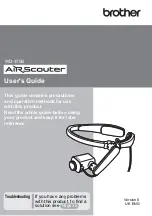
Aircraft
Phantom 3 4K
User Manual
©
2016 DJI. All Rights Reserved.
15
Vision Positioning System
The DJI Vision Positioning System uses ultrasound and image data to help the aircraft maintain its current
position. With the help of Vision Positioning, your Phantom
3
4
K can hover in place more precisely and fly
indoors or in other environments where a GPS signal is not available. The main components of the Vision
Positioning System are located on the bottom of your Phantom
3
4
K; they include [
2
] two ultrasonic
sensors and [
1
] one monocular camera.
[1]
[2]
20 m
20 m
H
If the aircraft is flying under 20 meters (65 feet) and Failsafe (including
Smart RTH, Lower Battery RTH ) is triggered, the aircraft will first
automatically ascend to 20 meters (65 feet) from the current altitude.
You can only cancel the ascending by exiting the Failsafe. Refer to “RTH
Button” on page 26 for more information on how to exit the Failsafe and
regain the control of the remote controller.
20 m
20 m
H
Aircraft automatically descends and lands if RTH is triggered when the
aircraft flies within a 20 meters (65 feet) radius of the Home Point. Aircraft
will stop ascending and immediately return to the Home Point if you move
the throttle stick if the aircraft reaches 20 meters (65 feet) altitudes or
beyond during Failsafe.
20米
20米
H
Aircraft cannot return to the Home Point when GPS signal is weak
( [
] displays grey) or unavailable.
20米
20米
H
if you move the throttle stick after the aircraft rises above 65 feet
(20m) but below the pre-set Failsafe RTH altitude, the aircraft will stop
ascending and immediately return to the Home Point.
Using Vision Positioning
Vision Positioning is activated automatically when the Phantom 3 4K is turned on. No further action
is required. Vision Positioning is typically used in indoor environments, where GPS is unavailable.
Using the sensors that are built into the Vision Positioning system, the Phantom 3 4K can hover
precisely even without GPS.















































